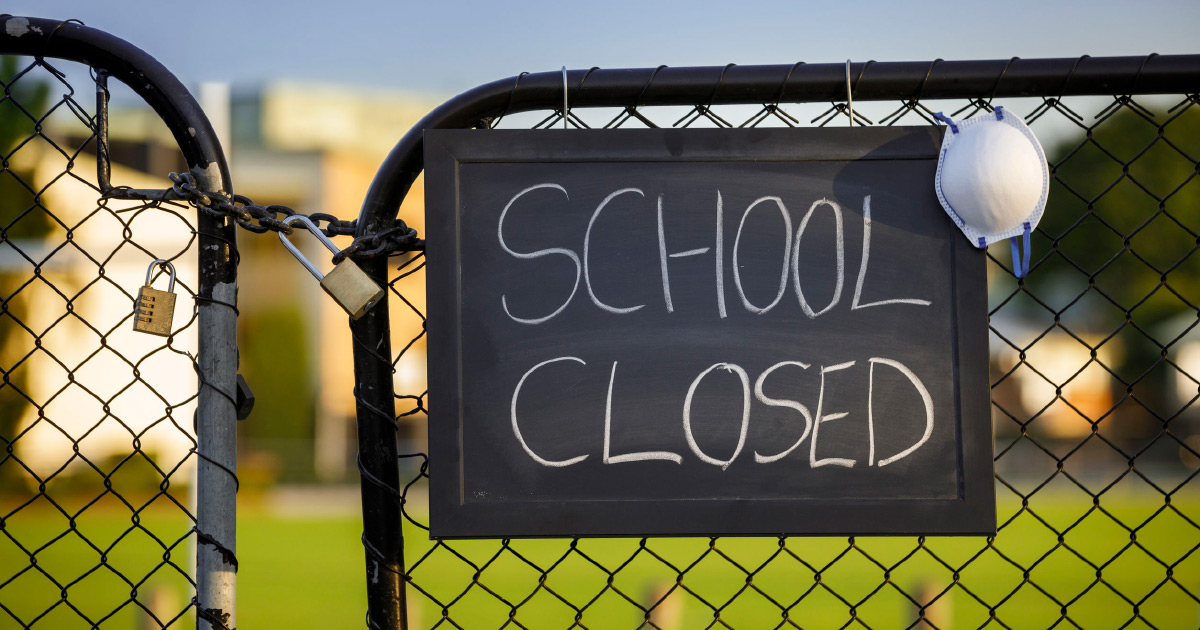Education leaders across the country are trying to determine whether and when they can safely reopen K-12 schools. What everyone needs to realize is that for students under 16 years of age schools never should have been closed. These students should return to their classrooms for summer school right away.
Older students also can return to school but need to observe the same precautions as adults under 65: washing hands, not touching their faces, and so forth.
Sweden never closed schools for those under 16 and public health authorities in neighboring Norway and Denmark now acknowledge that Sweden made the correct decision.
Globally, according to a research review published recently in The Lancet, a leading medical journal, the number of Covid-19 deaths prevented by school closings has been vanishingly small. The same can’t be said about the closings’ educational effects, which have been devastating.
Regular public schools were not prepared to switch to distance learning. Teachers were not trained; equipment was not in place, and as UNESCO put it in a report on school closings’ adverse effects, parents were “unprepared for distance and home schooling.” This was “especially true for parents with limited education and resources.”
During the lockdown, only one-fifth of the school districts surveyed by the Center for Reinventing Public Education—including districts in many of America’s most populous cities—required their teachers to provide live online video lessons to students.
Validly measuring student performance was even more challenging. Scheduled tests, especially those serving as gateways to selective colleges or validating promotion to higher educational levels, were disrupted. Online exams risked being unfair to students without the needed computer technology and internet connections—and may have made cheating all too easy. Giving pass/fail grades for online work encouraged lazy students not to do much of anything and punished hard-working students by not giving them letter-grades reflecting their accomplishments and efforts.
We know from both research and experience that students learn only if they spend enough high-quality time on task. They need to concentrate on what they need to know, within a well-designed curriculum. Their efforts need to be focused on studying that leads to their mastery of the subject-matter. Most children need a skilled and knowledgeable in-person teacher to accomplish this and, according to a study from the Center for Research on Education Outcomes at Stanford University, do not do as well in an all-virtual setting.
A survey of public-school students in Broward County, Florida on online learning during the lockdown found that 48% did not foresee completing their school work for the week, 45% had trouble focusing, 40% spent less than three hours per day on schoolwork, 81% joined video classes only a few days a week, and 52% didn’t feel motivated enough to do schoolwork. And that’s in a district with considerable experience with online learning.
Usually, as Fordham Institute president Michael J. Petrilli points out, only those who are “high-achieving, self-motivated learners” with considerable family support at home succeed in schooling that is online only. This is not to deny that a number of programs that blend online and classroom learning performed well pre-Covid-19. It is instead to emphasize that with the current state of the art there are drawbacks to education that is completely virtual.
The shutdown also has increased the existing achievement gap between children from well-educated families and those from less-educated families. We already have, under regular conditions, a “slide” in skills and knowledge after summer vacation. That summer slide hurts children from less well-educated households the most. We know from a Canadian study that prolonged teacher strikes (say, four weeks) can dramatically reduce student performance, particularly in math. The effects of the lockdown will be worse than the summer slide.
Because of the lockdown, a study from Brown University’s Annenberg Institute shows, students will begin the 2020-21 school year with about 70% of what they should have learned in reading this year and with less than half of what they should have learned in math. The loss in math will be even worse in lower grades.
Those who are worried about re-opening shouldn’t be panicked. Multiple studies have shown that the overwhelming majority of children under 16 are at low risk for contracting the virus. If K-12 students do get it, they typically have mild cases. The vast majority of U.S. teachers also are under the age where they are considered high risk for getting Covid-19, as has been pointed out by number-crunching historian Guy de la Bédoyère.
Children have been super-spreaders for some diseases (such as the flu), but not Covid-19, according to the Swiss health ministry and a report from Australia. Many countries in Europe and elsewhere already have re-opened their schools. This has not resulted in any notable increase in Covid-19 cases among students, parents or staff.
There is, however, a new, very rare childhood respiratory disease (multi-system inflammatory syndrome) that seems to be associated with coronavirus. The key is detecting these rare cases, not letting them divert us from re-opening.
The school lockdown has been a grievous error. We now must find ways to live with the consequences. Children should return to their classrooms now if their school has its protective practices worked out and attend make-up classes in brick and mortar buildings during the summer. They should be given tests to see where their learning needs to be re-started. Many may have to repeat this past year’s grade next fall.
Children have only one childhood in which to master skills and knowledge so they can fulfill their potential. Contrasting the tiny public-health risks with the devastating educational deprivation, it is imperative that public officials let America’s children return to school now.








